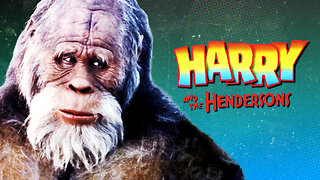10 Hours of Fractal Mathematical AI Art set to white noise.
The following works were generated using the following Midjourney:
Prompt: /imagine prompt: A highly detailed artwork, using a parametric equation to create captivating art, x(t) = A * cos(a * t) * cos(t) + A * sin(b * t) * cos(t) and y(t) = A * cos(a * t) * sin(t) + A * sin(b * t) * sin(t), where ‘A’, ‘a’, and ‘b’ are constants, and ‘t’ ranges from 0 to 2π. –ar 3:2 –q 2 –v 5
By experimenting with different values for ‘A’, ‘a’, and ‘b’, you can generate a variety of intriguing and visually appealing designs, combine this with other artistic elements and styles to create a captivating abstract design.
As the world continues to evolve and technology develops at an unprecedented rate, we find ourselves on the threshold of a unique intersection between art and mathematics. Throughout history, these seemingly disparate disciplines have interwoven to create captivating masterpieces that stand the test of time. The beauty that emerges from the intricate dance of numbers and shapes is a testament to the harmony that can be found within the chaos of the universe.
The fusion of mathematics and art is not a recent phenomenon. The ancient Greeks recognized the importance of geometry in understanding beauty and aesthetics. Their reverence for the golden ratio – a mathematical proportion they believed to be the epitome of beauty – can be found in the design of the Parthenon and other classical architecture. This infatuation with the relationship between numbers and aesthetics laid the foundation for the exploration of mathematics as a source of artistic inspiration.
Fast forward a few centuries, and we find that the Renaissance masters delved deeply into the realm of mathematics to perfect their art. The likes of Leonardo da Vinci and Albrecht Dürer, among others, extensively studied geometry and perspective to create visually stunning and harmonious compositions. This interplay between artistic skill and mathematical knowledge allowed these great artists to revolutionize their craft and usher in an era of unparalleled creativity.
In modern times, the advent of computers and advanced mathematical tools has opened up new frontiers for artists to explore. Fractals, for example, have become a staple of digital art due to their mesmerizing, self-repeating patterns that can be generated through mathematical equations. The Mandelbrot Set, named after the mathematician Benoît Mandelbrot, is one of the most famous examples of this kind of geometric art. The infinite intricacy and hypnotic beauty of fractals have captured the imagination of artists and mathematicians alike.
Another fascinating area where mathematics and art intersect is in the realm of tessellations. Tessellations are patterns created by repeating geometric shapes to fill a plane without gaps or overlaps. The work of Dutch artist M.C. Escher provides an excellent example of how these patterns can be used to create mind-bending and visually striking art. Escher’s ingenious use of mathematical concepts such as symmetry, reflection, and rotation allowed him to produce masterpieces that continue to captivate audiences worldwide.
But the marriage of mathematics and art extends far beyond the realm of visual art. Music, for instance, is deeply rooted in mathematical principles. Harmony, rhythm, and melody are all governed by mathematical patterns and relationships. The Fibonacci sequence, a series of numbers in which each is the sum of the two preceding ones (1, 1, 2, 3, 5, 8, and so on), can be found in the structure of musical compositions from classical to contemporary pieces. Composers like Johann Sebastian Bach and Wolfgang Amadeus Mozart skillfully employed mathematical concepts in their work, elevating music to a transcendent experience.
The exploration of mathematics in art has also led to the development of new artistic techniques and mediums. For instance, 3D printing technology has allowed artists to create intricate sculptures and installations that would have been impossible to produce by traditional means. Mathematical algorithms and equations are used to design these stunning pieces, demonstrating that mathematics can not only inspire beauty but also enable its manifestation in physical form.
#AI #AIArt #AIArtCommunity #Midjourney #Midjourneyv5 #StableDiffusion #Dall-e #AIArtwork
-
 1:11:58
1:11:58
Steven Crowder
2 days agoPALESTINE COMMIES: Mug Club Undercover First to Infiltrate Marxist Protesters at George Washington
532K1.64K -
 1:28:55
1:28:55
Graham Allen
2 days agoRussell Brand Speaks Out On His Baptism......FINALLY Some Good News!!
108K344 -
 54:08
54:08
Real Coffee With Scott Adams
8 hours agoEpisode 2464 CWSA 05/04/24
40.3K67 -
 1:58:47
1:58:47
OFFICIAL Jovan Hutton Pulitzer Rumble
11 hours agoAsk Me Anything! Let's Catch Up - Tell Me About Your Concerns and Let's Find Solutions!
55.8K50 -
 56:56
56:56
The Squad
15 hours agoArsenal GOING CLEAR & Man City WILL FLOP🏆 Big Ange is a FRAUD😨Enzo Fernandez MUST BE SOLD!
56.7K9 -
 13:42
13:42
Space Ice
1 day agoCon Air Is So Good It'll Restore Your Faith In Mankind - Best Movie Ever - Nicolas Cage
77.6K46 -
 1:05:36
1:05:36
TheGetCanceledPodcast
23 hours agoTHE GCP Episode 5 | Diogo Snow Talks Growing Up In Brazil, Art Basel, Cyberpunk & More
90K11 -
 1:06
1:06
bostonbeaman
1 day agoBE A MAN: Against the Grain 6 Pack
69.8K7 -
 14:43
14:43
JoBlo Horror Originals
1 day agoHarry and the Hendersons: When Bigfoot Went Hollywood
62K12 -
 13:49
13:49
Good Kid Productions
1 day agoXi Van Fleet on Maoism coming to Fairfax, VA (convo)
57.2K24